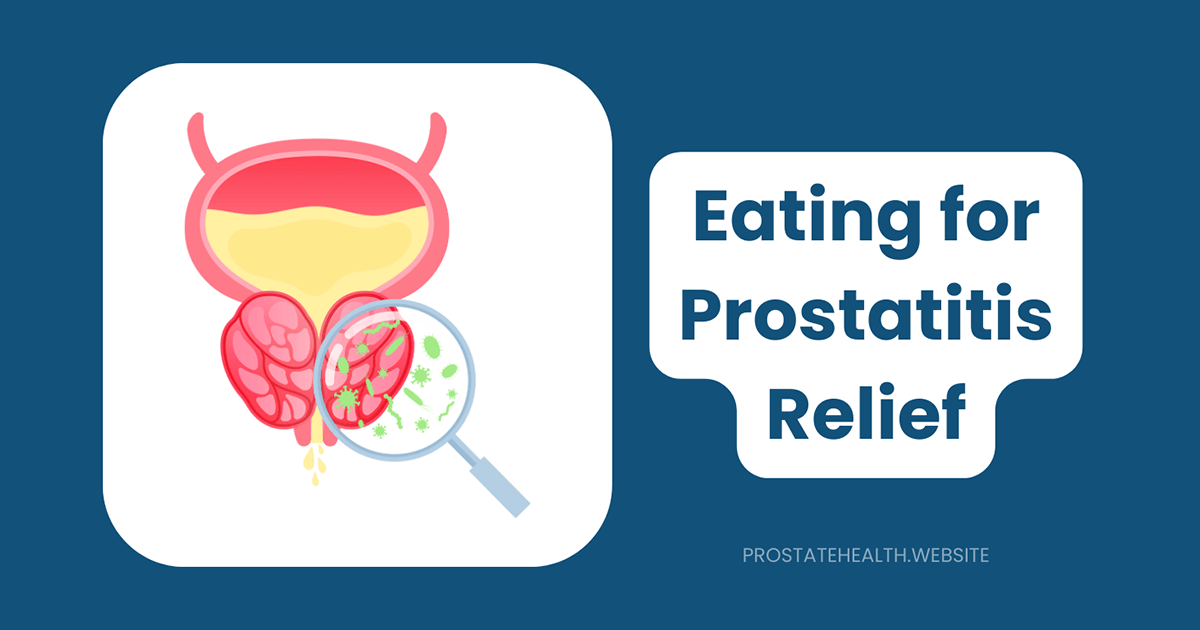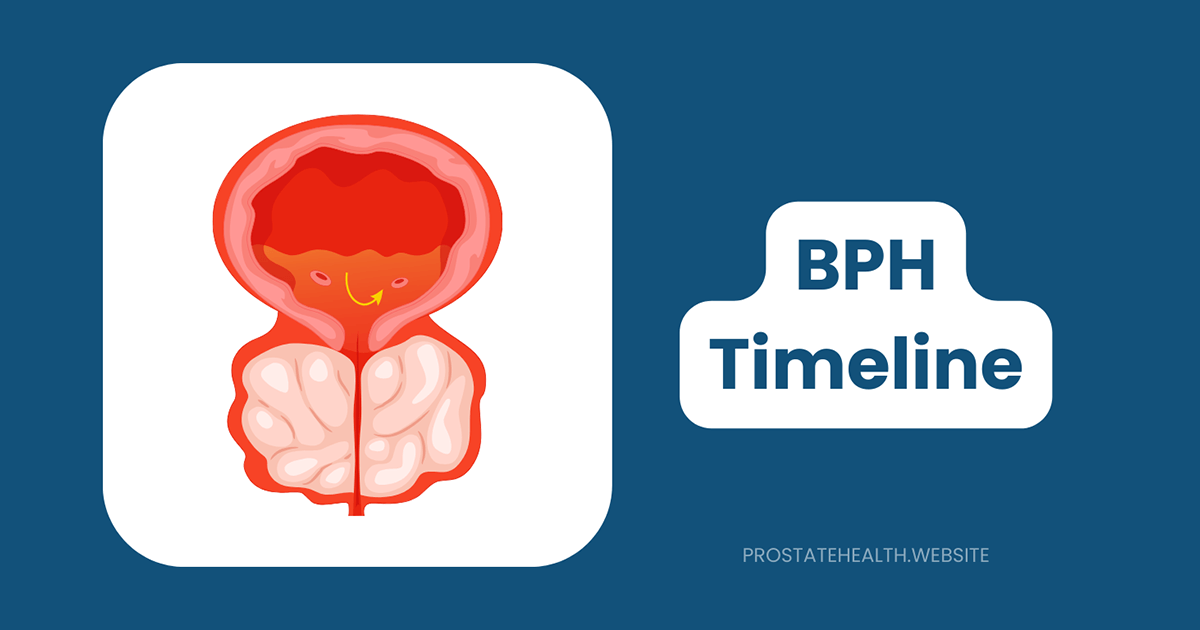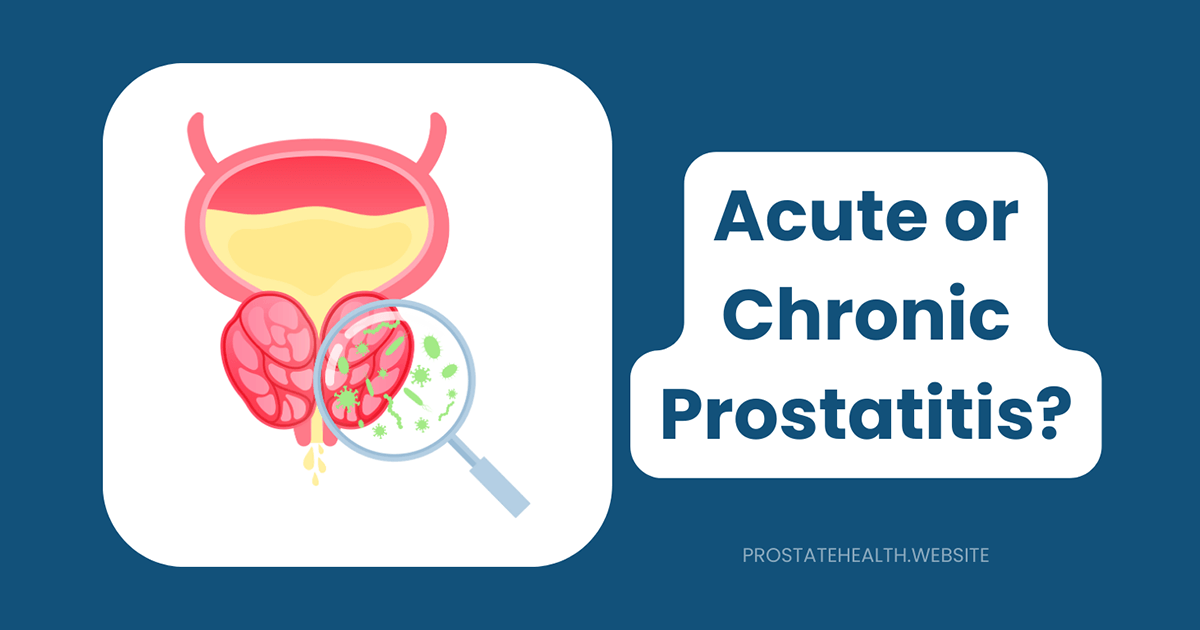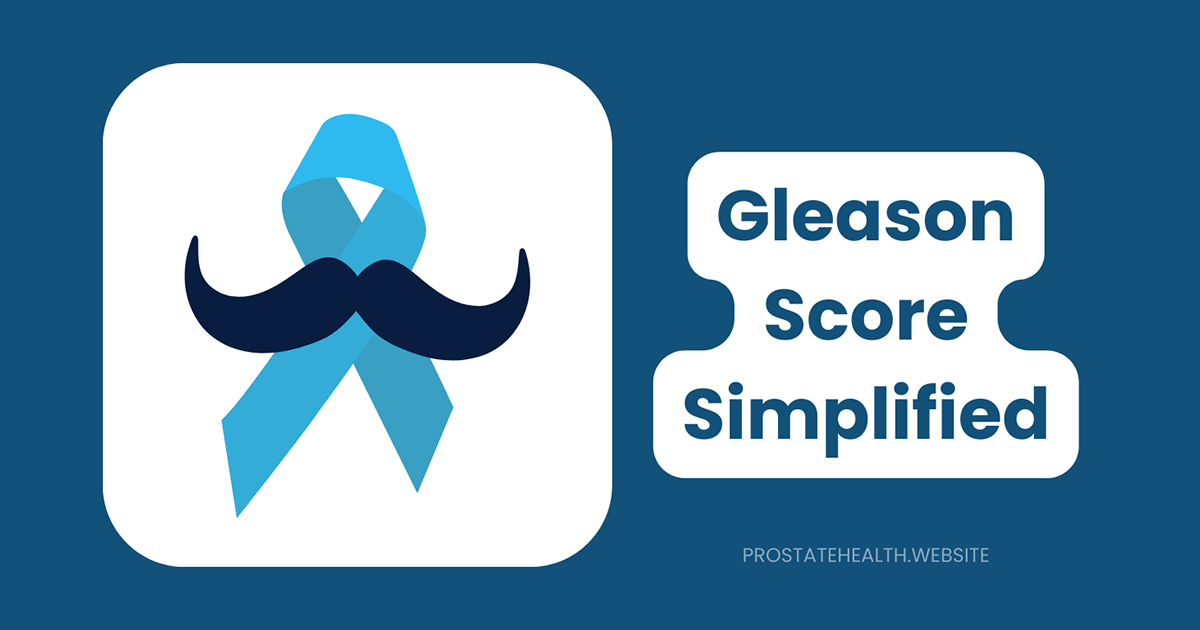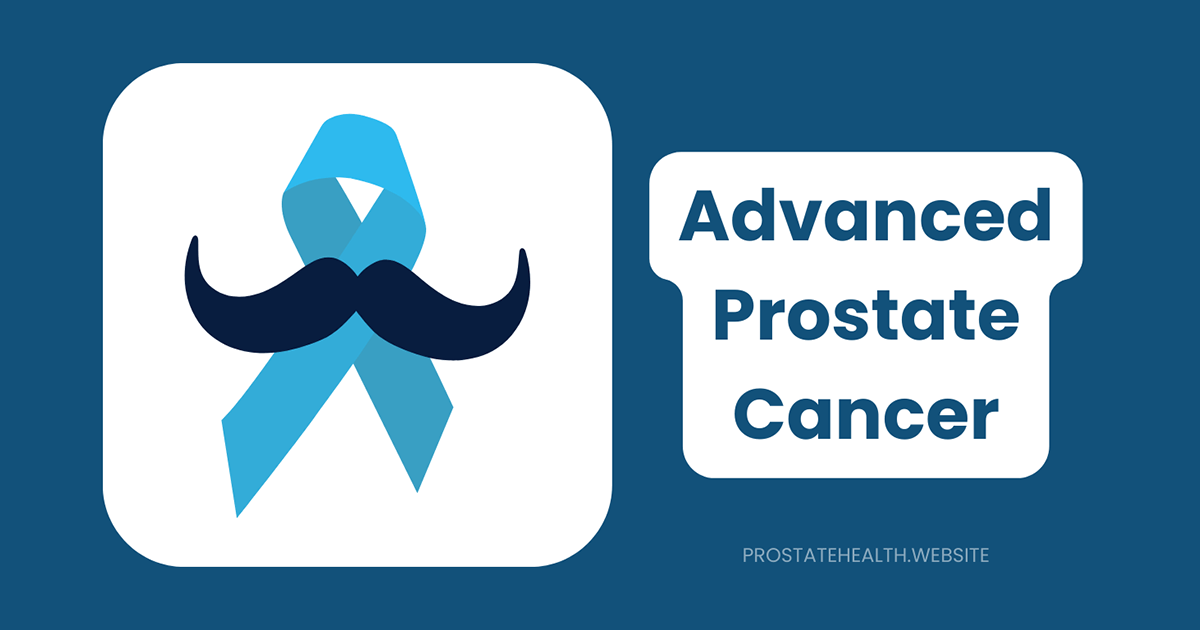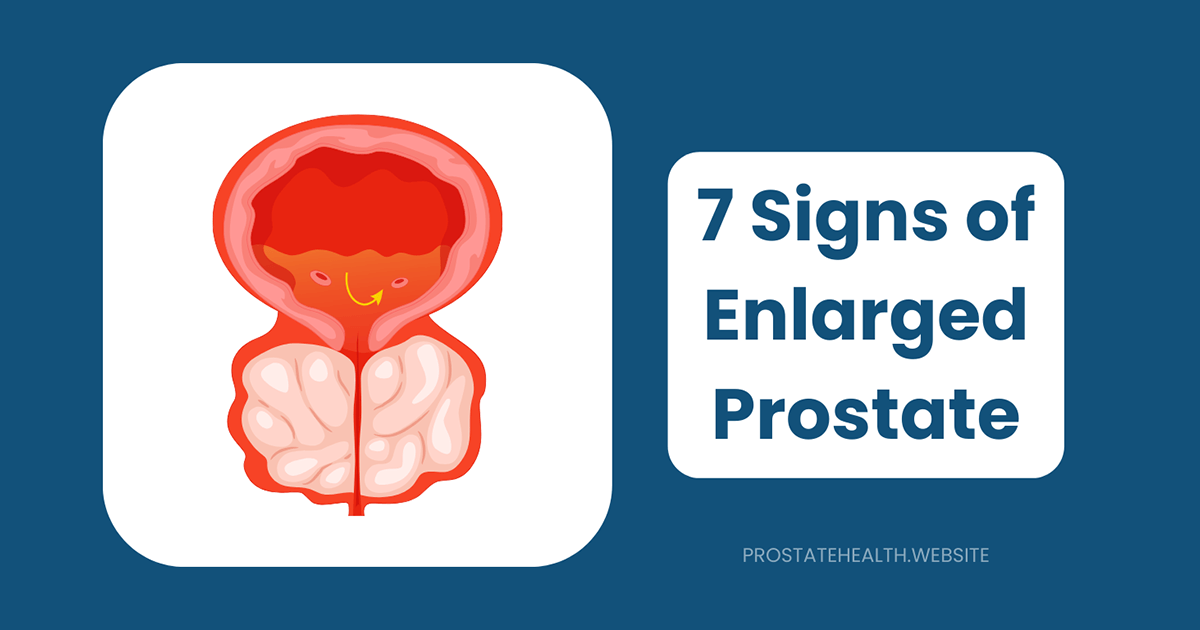Chronic Pelvic Pain Syndrome: When Prostatitis Isn’t Bacterial
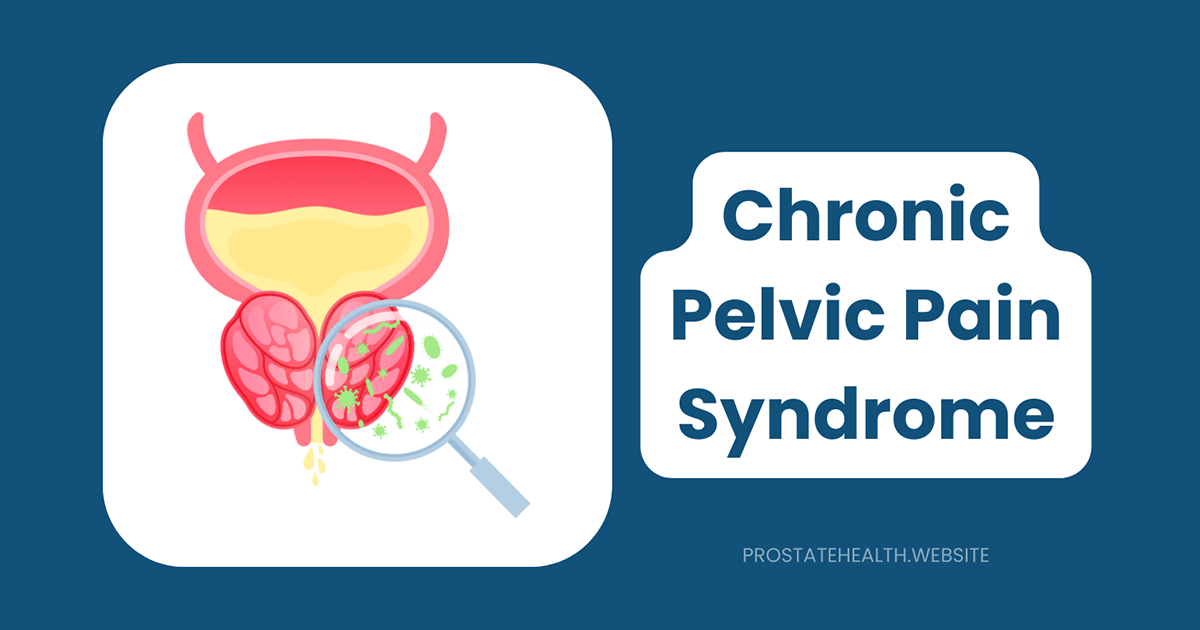
For many men suffering from persistent pelvic pain, the journey to diagnosis and effective treatment can feel like navigating a maze without a map. You visit doctor after doctor, undergo test after test, and receive antibiotic after antibiotic—yet the pain persists. If this sounds familiar, you may be dealing with Chronic Pelvic Pain Syndrome (CPPS), also known as nonbacterial prostatitis or NIH Category III prostatitis.
Despite being the most common form of prostatitis—accounting for approximately 90% of all cases and affecting up to 9% of men worldwide—CPPS remains poorly understood and frequently mismanaged. The result? Millions of men suffering unnecessarily, often for years, with a condition that significantly impacts their quality of life.
In this comprehensive guide, we’ll explore what CPPS is, why it happens, how it differs from bacterial prostatitis, and most importantly, the latest evidence-based approaches that can help you find relief and reclaim your life.
Understanding CPPS: More Than Just a Prostate Problem
What Exactly Is Chronic Pelvic Pain Syndrome?
Chronic Pelvic Pain Syndrome (CPPS) is characterized by persistent pain in the pelvic region lasting at least three months, without evidence of infection or other obvious pathology. Despite its traditional classification as “prostatitis,” mounting evidence suggests that CPPS is not primarily a prostate disease but rather a complex condition involving multiple systems.
The National Institutes of Health (NIH) classifies prostatitis into four categories:
- Category I: Acute Bacterial Prostatitis
- Category II: Chronic Bacterial Prostatitis
- Category III: Chronic Prostatitis/Chronic Pelvic Pain Syndrome
- Category IIIa: Inflammatory (white blood cells present in semen/prostatic fluid)
- Category IIIb: Non-inflammatory (no white blood cells present)
- Category IV: Asymptomatic Inflammatory Prostatitis
CPPS (Category III) is further divided based on whether inflammation is present, but both subcategories share the critical feature of no detectable bacterial infection.
The Prevalence and Impact of CPPS
The statistics surrounding CPPS are sobering:
- It affects approximately 2-10% of adult men worldwide
- The average age of onset is 43, but it can affect men of any age
- It accounts for nearly 2 million outpatient visits annually in the US alone
- Studies show that the quality of life impact is comparable to that of angina, Crohn’s disease, or diabetes
- Up to 50% of men with CPPS experience significant psychological distress, including depression and anxiety
- The economic burden is substantial, with direct and indirect costs estimated at billions annually
Dr. James Thompson, urologist and CPPS researcher at University Medical Center, notes: “CPPS is one of the most prevalent yet underrecognized men’s health issues. Many patients suffer for years before receiving appropriate care, often because the condition doesn’t fit neatly into our traditional disease models.”
Beyond Bacteria: The Complex Origins of CPPS
Unlike bacterial prostatitis, which has a clear infectious cause, CPPS appears to result from a complex interplay of multiple factors. Understanding these potential mechanisms is crucial for effective treatment.
The UPOINT System: A Framework for Understanding CPPS
The UPOINT classification system has emerged as a valuable framework for understanding the diverse factors contributing to CPPS. This system categorizes symptoms into six domains:
- Urinary symptoms: Frequency, urgency, hesitancy, or incomplete emptying
- Psychosocial dysfunction: Depression, anxiety, catastrophizing, or stress
- Organ-specific findings: Prostate tenderness or leukocytosis in prostatic fluid
- Infection: Previous UTIs or positive cultures (though not active infection)
- Neurological/systemic conditions: Pain beyond the pelvis or other pain syndromes
- Tenderness of muscles: Pelvic floor muscle dysfunction or trigger points
Most men with CPPS have involvement in multiple domains, highlighting the condition’s complexity and the need for personalized, multimodal treatment approaches.
Key Mechanisms Contributing to CPPS
Research has identified several potential mechanisms that may contribute to CPPS:
1. Pelvic Floor Dysfunction
Dysfunction of the pelvic floor muscles appears to play a central role in many CPPS cases:
- Chronic tension or spasm in pelvic floor muscles can cause pain and urinary symptoms
- This dysfunction may result from physical or psychological stress
- Trigger points in these muscles can refer pain to the prostate, penis, or testicles
- Altered muscle coordination can affect urination and sexual function
Dr. Sarah Chen, physical therapist specializing in pelvic health, explains: “Many men with CPPS have significant pelvic floor muscle dysfunction that goes unrecognized. These muscles can become hypertonic—essentially ‘locked’ in a state of tension—creating pain that mimics prostatitis.”
2. Neuroinflammation and Central Sensitization
Emerging research points to neurological factors in CPPS:
- Nerve inflammation can lead to heightened pain sensitivity (hyperalgesia)
- Central sensitization may occur, where the central nervous system amplifies pain signals
- Cross-talk between nerves serving different pelvic organs can create referred pain
- Brain imaging studies in 2025 have shown altered pain processing in CPPS patients
3. Psychological Factors
The mind-body connection plays a significant role in CPPS:
- Chronic stress can increase muscle tension and inflammation
- Anxiety and catastrophizing can amplify pain perception
- Depression may lower pain thresholds and reduce coping capacity
- Adverse childhood experiences and trauma have been linked to higher CPPS risk
4. Autoimmune and Inflammatory Processes
Some evidence suggests autoimmune or inflammatory components:
- Some men with CPPS show signs of systemic inflammation
- Autoimmune responses may target prostate tissue in some cases
- Mast cell activation in the prostate and pelvic region may contribute to symptoms
- Inflammatory cytokines have been found in prostatic fluid of men with Category IIIa CPPS
5. The Gut-Prostate Connection
One of the most exciting areas of recent research involves the gut microbiome:
- A 2024 Mendelian randomization study established a causal relationship between gut microbiota and CPPS
- Alterations in gut bacteria may trigger systemic inflammation that affects the prostate
- Certain dietary factors may influence both gut health and CPPS symptoms
- Preliminary studies on fecal microbiome transplantation show promise for CPPS treatment
Dr. Michael Roberts, gastroenterologist researching the gut-prostate connection, notes: “We’re discovering that what happens in the gut doesn’t stay in the gut. Disruptions to the microbiome can trigger systemic effects that manifest as symptoms in seemingly unrelated areas like the prostate and pelvic floor.”
Recognizing CPPS: Symptoms and Diagnosis
Common Symptoms of CPPS
The symptom profile of CPPS can vary significantly between individuals but typically includes:
Pain Symptoms
- Persistent pain in the perineum (area between scrotum and rectum)
- Pain in the lower abdomen, groin, or lower back
- Testicular pain or discomfort
- Pain at the tip of the penis (unrelated to urination)
- Pain during or after ejaculation
- Pain during or after bowel movements
Urinary Symptoms
- Frequent urination, especially at night
- Urgent need to urinate
- Weak urine stream or intermittent flow
- Straining to urinate
- Sensation of incomplete bladder emptying
- Burning during urination (in the absence of infection)
Sexual Symptoms
- Erectile difficulties
- Decreased libido
- Premature ejaculation
- Pain during or after sexual activity
- Changes in semen quality or appearance
Systemic Symptoms
- Fatigue
- Brain fog or difficulty concentrating
- Sleep disturbances
- Irritability or mood changes
- Muscle aches or joint pain in other areas
How CPPS Differs from Bacterial Prostatitis
Understanding the differences between CPPS and bacterial prostatitis is crucial for proper treatment:
| Feature | Bacterial Prostatitis | Chronic Pelvic Pain Syndrome |
| Cause | Bacterial infection | Multifactorial, non-infectious |
| Onset | Often sudden (acute) or recurrent | Usually gradual, persistent |
| Fever | Common in acute bacterial form | Rare |
| Urine/prostatic fluid | Bacteria present | No bacteria detected |
| Response to antibiotics | Usually improves | Little to no improvement |
| White blood cells | Present | May or may not be present |
| Duration | Resolves with proper treatment | Often chronic, waxing and waning |
The Diagnostic Journey: Ruling Out Other Conditions
Diagnosing CPPS involves a process of elimination, as there’s no specific test that confirms the condition. The diagnostic process typically includes:
Medical History and Symptom Assessment
- Detailed discussion of symptoms, their duration, and impact on quality of life
- Assessment using validated questionnaires like the NIH Chronic Prostatitis Symptom Index (NIH-CPSI)
- Review of previous treatments and their effectiveness
- Evaluation of psychological factors and stress levels
Physical Examination
- Digital rectal examination to assess prostate tenderness and size
- External examination of the abdomen and genitals
- Assessment of pelvic floor muscle tension and trigger points
- Neurological examination to rule out other causes of pain
Laboratory Tests
- Urinalysis and urine culture to rule out urinary tract infection
- Expressed prostatic secretions (EPS) analysis
- Semen analysis in some cases
- Blood tests to rule out other conditions
Additional Testing
- Urodynamic studies to assess bladder function
- Cystoscopy to examine the urethra and bladder
- Imaging studies (ultrasound, CT, or MRI) if structural abnormalities are suspected
- Psychological assessment for anxiety, depression, or catastrophizing
Dr. Robert Williams, urologist specializing in pelvic pain, emphasizes: “The diagnosis of CPPS is one of exclusion. We need to rule out bacterial infection, cancer, and other conditions that might cause similar symptoms. But it’s equally important to identify the specific factors contributing to each patient’s symptoms, as this guides treatment.”
Breaking the Cycle: Modern Approaches to CPPS Treatment
The treatment of CPPS has evolved significantly in recent years, moving away from a prostate-centric approach toward a more holistic, multimodal strategy. The 2025 American Urological Association guidelines emphasize personalized treatment based on each patient’s symptom profile and contributing factors.
The UPOINT-Guided Multimodal Approach
Research shows that targeting therapy to a patient’s specific UPOINT domains significantly improves outcomes. This personalized approach may include:
For Urinary Symptoms
- Alpha-blockers (tamsulosin, alfuzosin): Relax smooth muscle in the prostate and bladder neck
- Anticholinergics (if overactive bladder symptoms predominate)
- Bladder training techniques
- Dietary modifications to reduce bladder irritation
For Psychosocial Factors
- Cognitive-behavioral therapy (CBT): Addresses catastrophizing and pain-related anxiety
- Stress management techniques: Meditation, deep breathing, progressive muscle relaxation
- Antidepressants: Particularly tricyclic antidepressants like amitriptyline, which have dual effects on mood and pain
- Support groups: Connecting with others who understand the condition
For Organ-Specific Symptoms
- Anti-inflammatory medications: NSAIDs or specialized supplements
- 5-alpha reductase inhibitors (finasteride, dutasteride): May help if prostate enlargement contributes
- Prostate massage: Controversial but may help some patients by draining prostatic fluid
- Local heat therapy: Improves blood flow and reduces muscle tension
For Infection History
- Targeted antibiotic trials: Short courses for patients with infection history or positive cultures
- Biofilm disruptors: For cases where hidden bacterial reservoirs are suspected
- Probiotics: To restore healthy microbiome balance
For Neurological/Systemic Symptoms
- Neuromodulatory medications: Gabapentin, pregabalin, or amitriptyline
- Anti-inflammatory diet: Emphasizing omega-3s and antioxidant-rich foods
- Supplements: Quercetin, bee pollen, or turmeric with demonstrated anti-inflammatory effects
- Acupuncture: Shows promise in reducing systemic pain sensitivity
For Tenderness/Muscle Dysfunction
- Pelvic floor physical therapy: The cornerstone of treatment for many patients
- Trigger point release: Manual therapy targeting specific painful points
- Relaxation training: Learning to consciously relax pelvic muscles
- Biofeedback: Using sensors to visualize and control pelvic muscle tension
Emerging Treatments Showing Promise
Several innovative approaches have emerged in recent years:
Extracorporeal Shockwave Therapy (ESWT)
A 2024 randomized controlled trial showed significant symptom improvement with ESWT:
- Uses acoustic waves to stimulate healing and reduce pain
- Non-invasive with minimal side effects
- Typically requires 6-12 weekly sessions
- May work by reducing inflammation and promoting tissue regeneration
Microbiome-Based Approaches
Based on the gut-prostate connection:
- Specific probiotic formulations targeting CPPS-related dysbiosis
- Dietary modifications to support healthy gut bacteria
- Fecal microbiota transplantation in research settings
- Prebiotic supplements to nourish beneficial bacteria
Neuromodulation Techniques
Targeting the nervous system’s role in pain:
- Transcutaneous electrical nerve stimulation (TENS)
- Percutaneous tibial nerve stimulation (PTNS)
- Transcranial magnetic stimulation (TMS) for central pain processing
- Implantable nerve stimulators for severe, refractory cases
Injection Therapies
For specific cases with identifiable trigger points:
- Trigger point injections with local anesthetics
- Botulinum toxin injections for hypertonic pelvic floor muscles
- Intraprostatic injections of anti-inflammatory agents
- Platelet-rich plasma (PRP) injections (experimental)
Lifestyle Modifications: The Foundation of CPPS Management
Beyond medical interventions, lifestyle changes play a crucial role in managing CPPS:
Dietary Approaches
- Anti-inflammatory diet: Rich in fruits, vegetables, whole grains, and healthy fats
- Elimination of potential triggers: Common culprits include caffeine, alcohol, spicy foods, and artificial sweeteners
- Adequate hydration: Balanced to avoid both dehydration and excessive urination
- Specific supplements: Quercetin, pollen extract, zinc, and omega-3 fatty acids show some evidence of benefit
Physical Activity and Movement
- Regular, gentle exercise: Walking, swimming, or cycling (with appropriate seat)
- Stretching routines: Particularly for hip flexors, hamstrings, and lower back
- Yoga poses: Specific positions that release pelvic tension
- Avoidance of activities that worsen symptoms: High-impact exercise or prolonged sitting
Stress Management and Mental Health
- Mindfulness meditation: Shown to reduce pain perception and stress
- Breathing exercises: To reduce tension and activate the parasympathetic nervous system
- Sleep hygiene: Addressing sleep disturbances that can worsen pain
- Work-life balance: Reducing stress triggers that may exacerbate symptoms
Sexual Health Considerations
- Regular ejaculation: May help some men by relieving prostatic pressure
- Tantric practices: Techniques that reduce tension during sexual activity
- Open communication with partners: About pain and necessary modifications
- Treatment of concurrent sexual dysfunction: Addressing erectile difficulties or premature ejaculation
Living Well with CPPS: Real Stories and Practical Strategies
James’s Journey: The Power of a Multimodal Approach
James, 42, struggled with CPPS for nearly five years before finding relief:
“I saw six different doctors and took countless rounds of antibiotics before being diagnosed with CPPS. The turning point came when I found a urologist who understood the condition and recommended a comprehensive approach. Pelvic floor physical therapy made the biggest difference—I had no idea how much tension I was holding in those muscles. Combined with stress management techniques, dietary changes, and low-dose amitriptyline, I’ve reduced my symptoms by about 80%. It wasn’t a quick fix, but gradually, I got my life back.”
Michael’s Experience: Addressing the Mind-Body Connection
Michael, 36, found that psychological factors played a significant role in his CPPS:
“For years, I focused exclusively on finding a physical cause and cure for my pelvic pain. It wasn’t until I started working with a psychologist specializing in chronic pain that I recognized how stress and anxiety were amplifying my symptoms. Cognitive-behavioral therapy helped me break the cycle of catastrophizing and pain-related fear. This didn’t make the physical aspects disappear, but it dramatically changed my relationship with the pain and reduced its impact on my life.”
Robert’s Approach: The Gut-Prostate Connection
Robert, 51, experienced significant improvement by addressing gut health:
“After struggling with CPPS for years, I read about the connection between gut health and inflammation. Working with an integrative physician, I overhauled my diet—eliminating processed foods, adding fermented foods, and taking specific probiotics. Within three months, my symptoms had improved dramatically. I still do pelvic floor stretches and manage stress, but addressing the gut connection was the missing piece for me.”
Practical Strategies for Daily Management
Beyond formal treatments, these practical approaches can help manage CPPS day-to-day:
For Pain Flares
- Heat therapy: Warm baths or heating pads to relax muscles
- Gentle stretching: Specific pelvic floor release stretches
- Stress reduction: Deep breathing or meditation during flares
- Temporary activity modification: Reducing triggers until flare subsides
For Work and Travel
- Ergonomic seating: Cushions designed to reduce pelvic pressure
- Regular movement breaks: Standing and stretching every 30-60 minutes
- Travel planning: Strategies for long flights or car rides
- Medication timing: Optimizing treatment around demanding activities
For Sleep Optimization
- Sleep position modifications: Often side-sleeping with a pillow between knees
- Pre-sleep relaxation routine: To reduce pelvic tension before bed
- Bladder management: Techniques to reduce nighttime urination
- Comfortable bedding: Supporting proper alignment and reducing pressure points
For Relationships and Intimacy
- Partner education: Helping partners understand the condition
- Communication strategies: Discussing limitations and needs
- Alternative intimacy practices: When traditional sexual activity is painful
- Couples counseling: When CPPS affects relationship dynamics
The Future of CPPS Treatment: Promising Research Directions
The understanding and treatment of CPPS continue to evolve rapidly. Several promising research areas may transform management in the coming years:
Precision Medicine Approaches
Emerging research aims to better categorize CPPS subtypes for targeted treatment:
- Genetic testing to identify predispositions and optimal treatments
- Biomarker identification for more precise diagnosis and treatment selection
- Microbiome analysis to guide personalized dietary and probiotic recommendations
- Advanced imaging to identify specific structural or functional abnormalities
Novel Therapeutic Targets
Research is exploring new treatment pathways:
- Mast cell stabilizers to reduce inflammation in category IIIa patients
- Targeted cytokine inhibitors based on individual inflammatory profiles
- Specific nerve growth factor inhibitors to address neurogenic inflammation
- Cannabinoid-based therapies for pain modulation
Integrative Approaches
Holistic models are gaining scientific validation:
- Mind-body medicine protocols specifically for CPPS
- Virtual reality for pain management and pelvic floor relaxation training
- Group-based multidisciplinary programs combining medical, psychological, and physical therapy
- Remote monitoring technologies to track symptoms and treatment response
Preventive Strategies
Research is beginning to identify potential preventive approaches:
- Early intervention for acute pelvic pain to prevent chronification
- Stress resilience training for high-risk individuals
- Microbiome protection strategies starting in early adulthood
- Pelvic health education as part of routine men’s health care
Finding the Right Care: Building Your Treatment Team
Given the complex nature of CPPS, assembling the right healthcare team is crucial:
Key Specialists to Consider
- Urologist: Ideally one with specific interest and experience in CPPS
- Pelvic floor physical therapist: Specialized training in male pelvic pain is essential
- Pain management specialist: For complex or refractory pain
- Psychologist or psychiatrist: Experienced in chronic pain management
- Gastroenterologist: If gut-related symptoms or approaches are relevant
- Integrative medicine physician: To coordinate conventional and complementary approaches
Questions to Ask Potential Providers
- What percentage of your practice involves treating men with CPPS?
- Do you use the UPOINT system or another multimodal approach?
- What is your typical treatment protocol for CPPS?
- How do you measure treatment success?
- Do you collaborate with other specialists in treating this condition?
- What role do you see for non-pharmaceutical approaches?
Red Flags in CPPS Treatment
Be cautious of providers who:
- Insist on long-term antibiotics despite negative cultures
- Focus exclusively on the prostate while ignoring other factors
- Recommend invasive procedures as first-line treatments
- Dismiss the role of psychological factors or pelvic floor dysfunction
- Promise quick or complete cures
- Rely heavily on unproven supplements or devices
Conclusion: Hope and Empowerment for Men with CPPS
Living with Chronic Pelvic Pain Syndrome can be challenging, but the landscape of understanding and treatment has transformed dramatically in recent years. What was once considered a mysterious, untreatable condition is now increasingly recognized as a complex but manageable health issue with multiple evidence-based treatment options.
The key takeaways for men dealing with CPPS include:
- You’re not alone: CPPS affects millions of men worldwide
- It’s not “all in your head”: While psychological factors may contribute, CPPS has real physical components
- Antibiotics aren’t the answer: For true CPPS, continued antibiotic use without evidence of infection is ineffective and potentially harmful
- Multimodal treatment works: Addressing all contributing factors offers the best chance for improvement
- Self-management is powerful: Your daily habits and coping strategies play a crucial role in managing the condition
- Finding the right healthcare team matters: Seek providers who understand the complexity of CPPS and take a comprehensive approach
With proper diagnosis, comprehensive treatment, and effective self-management strategies, most men with CPPS can significantly reduce their symptoms and reclaim their quality of life. The journey may not be quick or linear, but with persistence and the right support, a better life beyond chronic pelvic pain is possible.
Frequently Asked Questions About CPPS
CPPS is classified as a type of prostatitis (Category III in the NIH classification), but many experts now believe the name is misleading. While the prostate may be involved, CPPS is increasingly understood as a complex condition involving multiple systems, not just prostate inflammation.
Some men experience complete resolution of CPPS, particularly those who receive appropriate multimodal treatment early. However, for many, it becomes a manageable chronic condition with periods of remission and occasional flares. The good news is that with proper treatment, most men can significantly reduce symptoms and improve quality of life.
No, there is no established link between CPPS and increased prostate cancer risk. However, some symptoms overlap, so proper diagnostic evaluation is important to rule out cancer, particularly in men with risk factors or concerning symptoms.
Timeline to improvement varies based on individual factors and treatment approaches. Some men notice initial improvements within weeks, particularly with pelvic floor physical therapy or certain medications. However, substantial and lasting improvement typically takes 3-6 months of consistent, multimodal treatment.
The relationship between sexual activity and CPPS varies between individuals. For some men, regular ejaculation helps relieve symptoms, possibly by releasing prostatic fluid and reducing pressure. For others, ejaculation can temporarily worsen pain. Working with your healthcare provider to understand your specific pattern is important.
Yes, research suggests there may be connections between CPPS and other chronic pain conditions like irritable bowel syndrome, fibromyalgia, and chronic fatigue syndrome. These conditions may share underlying mechanisms related to central sensitization and neuroinflammation.

